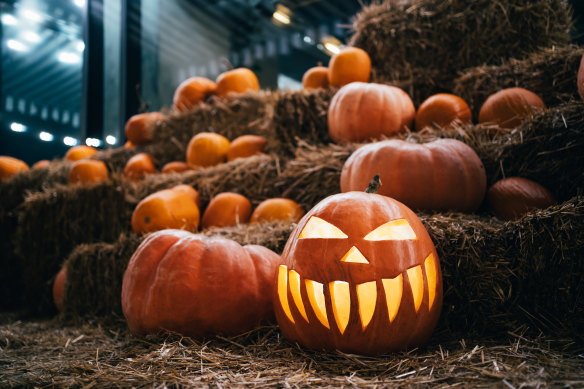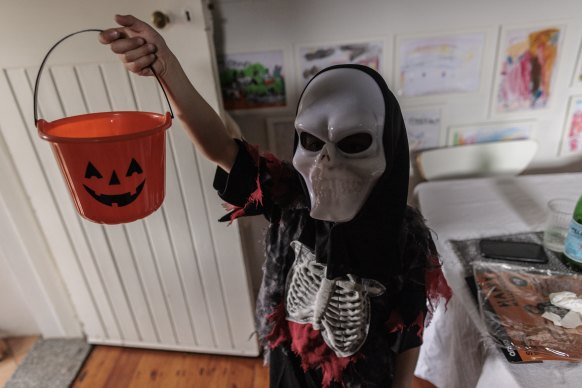It’s scary but Halloween spending is tipped to near $500 million
Save articles for later
Add articles to your saved list and come back to them any time.
Australia’s growing obsession with Halloween could be good news for under-pressure retailers if predictions that consumer spending on lollies, costumes and decorations will hit $490 million this year are anything to go by.
The Australian Retailers Association is tipping Halloween spending will be up 14 per cent on last year, approaching the half-billion-dollar mark.
Halloween spending has been growing in Australia over the past several years. Credit: Getty Images
Average spending per person celebrating the event is tipped to be 7 per cent stronger, at $93 each, according to consumer data from the association and Roy Morgan.
Australians aged between 35 and 49 are the most likely to mark Halloween, according to consumer surveys by the two groups, followed by those aged 18 to 34.
The retailers’ association’s boss, Paul Zahra, said the occasion marked a “welcome break from routine” and gave families a chance to get together despite cost-of-living pressures.
“It’s also important for retailers to build sales momentum in the run-up to Christmas,” he said.
Children’s costumes account for a big part of spending.Credit: Brook Mitchell
Major consumer brands, including the nation’s discount department stores, have already started rolling out their Halloween ranges.
Wesfarmers-owned Kmart and Target have launched ranges of costumes, clothing and home decor, while Big W is offering everything from costumes to fake blood to themed pet accessories.
A spokesperson for Kmart and Target said the retailers were expecting children’s costumes and trick-or-treating gear to sell well this year at a time when families are looking for affordable fun.
“Halloween is one of our fastest growing events of the year and across Kmart and Target we have continued to expand our ranges across multiple categories including decorator, clothing, sleepwear, confectionary, craft and toys as a result,” the spokesperson said.
The products on offer let consumers “play as much or as little into the event as they like”, in the face of rising living costs, they said.
The projected spending puts Halloween just ahead of Valentine’s Day, with the retailers association predicting earlier this year that consumers would fork out $485 million on February 14.
October 31 has now joined the ranks of other major spending events, such as Easter, which was tipped to generate $8.1 billion over the long weekend this year. Christmas remains the biggest celebration on the retail calendar, however, with sales exceeding $66 billion in the lead-up to December 25 last year.
The retailers’ association put Halloween spending at $430 million for 2022, when it tracked expenditure for the first time in light of the rising popularity of the event in the Australia.
US-centric retail events have been steadily becoming part of the local trading calendar. The November Black Friday and Cyber Monday sales events now mark the start of Australia’s festive trading calendar and are starting to eclipse the Boxing Day sales period.
Higher Halloween spending comes as consumer data suggests Australian households are still prioritising spending on events together, but cutting back on home goods and at specialty retailers.
UBS consumer data released this month shows cost-of-living pressures are driving an increase in spending on utilities, groceries, petrol and rent, and shoppers are changing their behaviour in response to spend less on eating out, entertainment, clothing and recreation.
“Consumer spending expectations for the next 12 months remain positive yet have fallen to their lowest level since mid-2021,” UBS analysts said in a note to clients.
The Business Briefing newsletter delivers major stories, exclusive coverage and expert opinion. Sign up to get it every weekday morning.
Most Viewed in Business
From our partners
Source: Read Full Article

